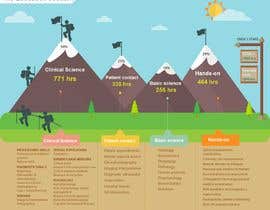Daily Practices That Lead To Pain In The Back And Approaches For Avoidance
Daily Practices That Lead To Pain In The Back And Approaches For Avoidance
Blog Article
Created By-Bates Secher
Preserving correct position and staying clear of typical mistakes in daily tasks can substantially impact your back health. From just how you sit at your workdesk to how you raise heavy objects, tiny changes can make a huge distinction. Visualize a day without the nagging pain in the back that prevents your every move; the remedy might be easier than you think. By making a couple of tweaks to your everyday routines, you could be on your method to a pain-free existence.
Poor Stance and Sedentary Lifestyle
Poor pose and an inactive way of living are 2 significant factors to back pain. When you slouch or hunch over while sitting or standing, you placed unnecessary pressure on your back muscle mass and spinal column. This can result in muscular tissue inequalities, stress, and eventually, persistent neck and back pain. Additionally, sitting for long periods without breaks or exercise can deteriorate your back muscular tissues and bring about rigidity and discomfort.
To combat bad pose, make a mindful initiative to sit and stand directly with your shoulders back and aligned with your ears. Bear in mind to keep your feet level on the ground and avoid crossing your legs for extended periods.
Incorporating routine extending and enhancing exercises into your day-to-day regimen can also aid improve your pose and alleviate pain in the back connected with a less active way of living.
Incorrect Training Techniques
Inappropriate training methods can significantly add to back pain and injuries. When you raise heavy things, remember to flex your knees and use your legs to lift, rather than counting on your back muscular tissues. Stay clear of turning your body while lifting and maintain the item near your body to minimize stress on your back. y strap chiropractic adjustment near me to preserve a straight back and stay clear of rounding your shoulders while lifting to prevent unnecessary stress on your spinal column.
Constantly examine the weight of the item before lifting it. If it's too heavy, request assistance or usage devices like a dolly or cart to carry it securely.
Bear in mind to take breaks throughout raising tasks to offer your back muscles a chance to rest and avoid overexertion. By applying correct training strategies, you can avoid back pain and minimize the risk of injuries, ensuring your back remains healthy and balanced and strong for the long-term.
Lack of Routine Exercise and Stretching
An inactive way of living lacking regular workout and extending can substantially add to back pain and discomfort. When you don't take part in physical activity, your muscular tissues become weak and stringent, leading to bad posture and enhanced pressure on your back. click the up coming internet site strengthen the muscles that sustain your spine, improving stability and decreasing the threat of neck and back pain. Incorporating extending into your regimen can additionally enhance adaptability, protecting against stiffness and pain in your back muscles.
To prevent pain in the back caused by a lack of workout and extending, go for at least thirty minutes of modest physical activity most days of the week. Include workouts that target your core muscles, as a solid core can assist minimize pressure on your back.
Additionally, take breaks to stretch and move throughout the day, specifically if you have a desk job. Straightforward stretches like touching your toes or doing shoulder rolls can aid relieve stress and avoid pain in the back. Prioritizing normal workout and extending can go a long way in keeping a healthy and balanced back and decreasing discomfort.
Verdict
So, remember to stay up directly, lift with your legs, and remain active to avoid pain in the back. By making straightforward changes to your day-to-day behaviors, you can prevent the discomfort and restrictions that feature pain in the back. Look after your back and muscles by practicing great position, appropriate lifting methods, and regular exercise. Your back will thanks for it!
